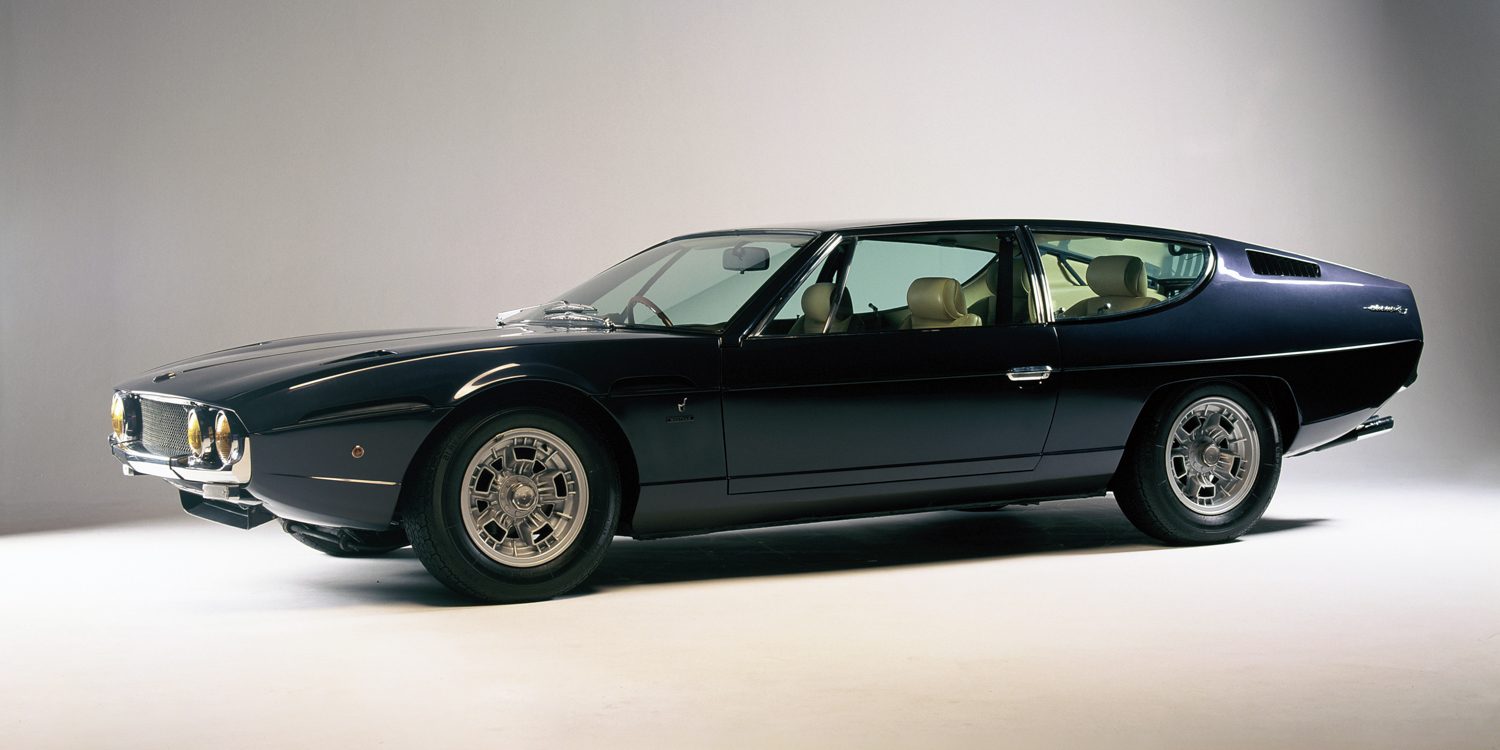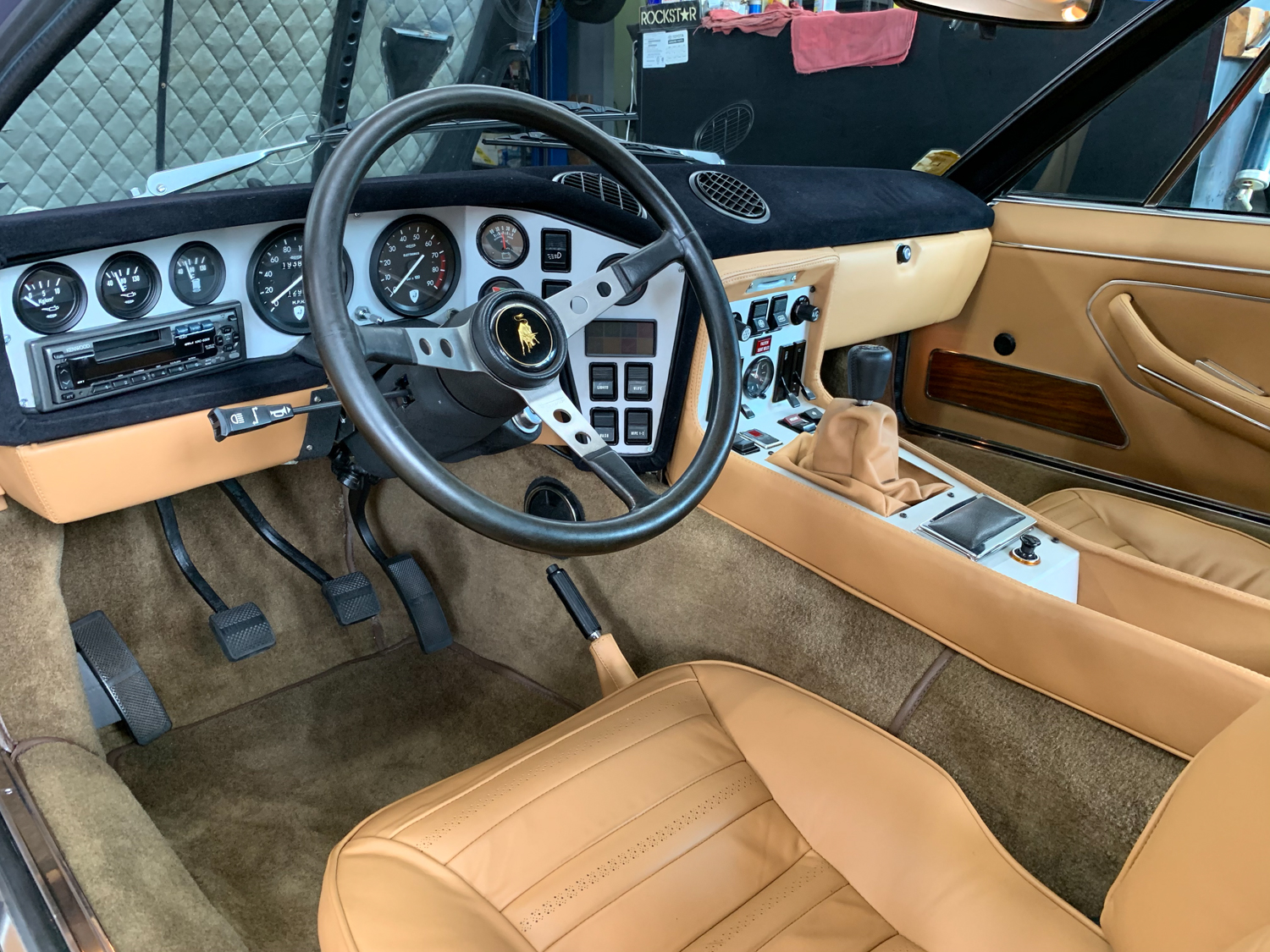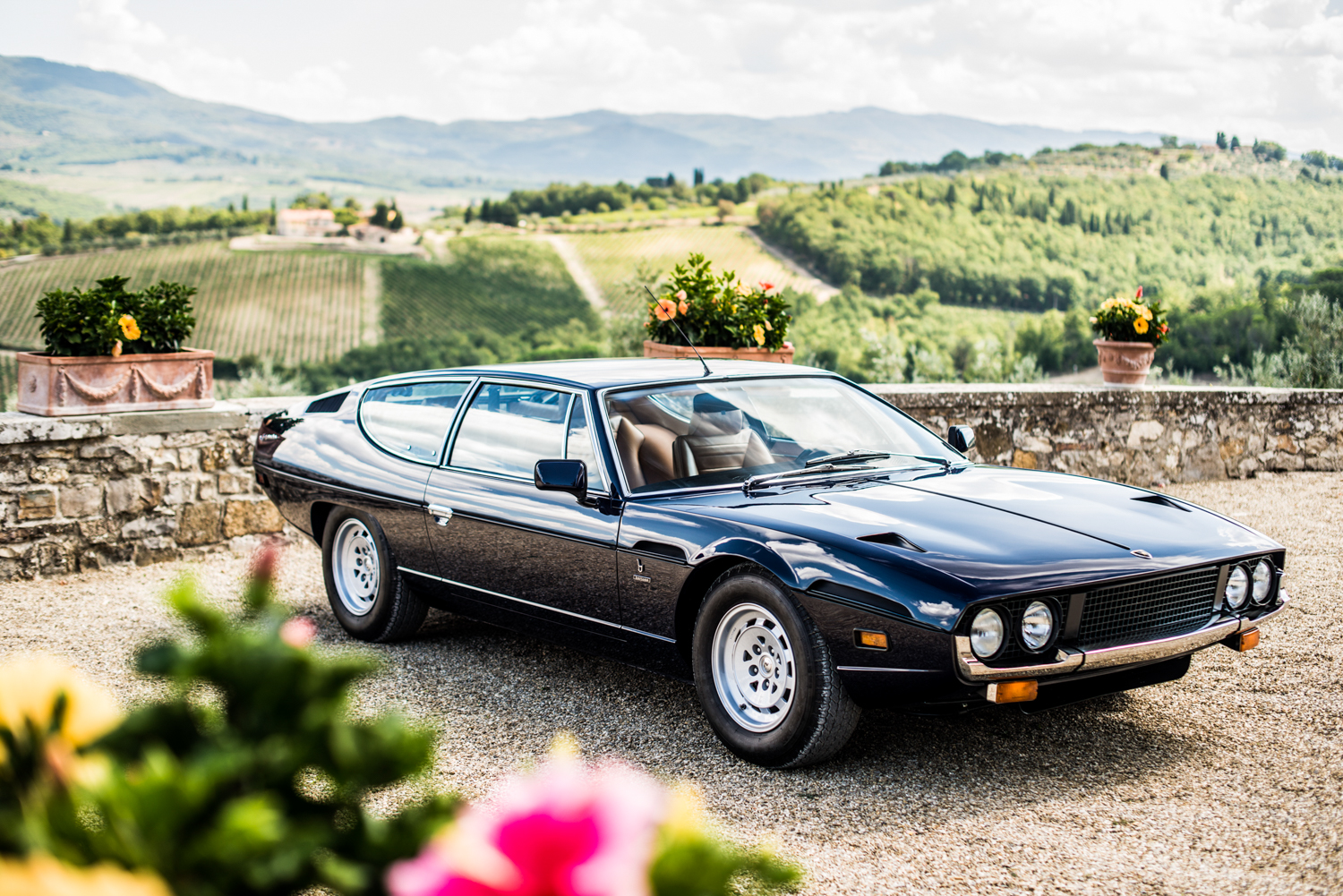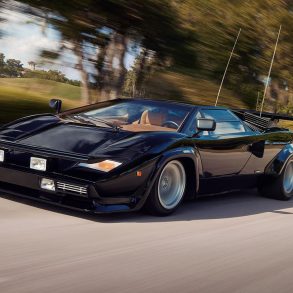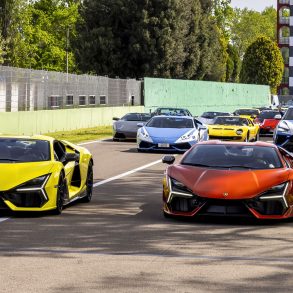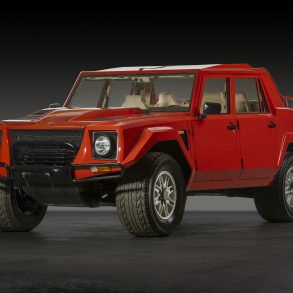Mention Lamborghini to any vintage enthusiast and the conversation will likely focus on the Countach or Miura. Of course, these two juggernauts of design and performance excellence are among the most beautiful and unique sports cars ever conceived, yet during production of both these iconic Lamboghinis, the Espada lurks, almost hidden in the shadows. With its V12 engine, Miura wheels, dramatically low profile, and expansive glass, the Espada remains every bit as bold and daring as the Miura and Countach, with the added benefit of being both an affordable classic and a surprisingly drivable supercar.
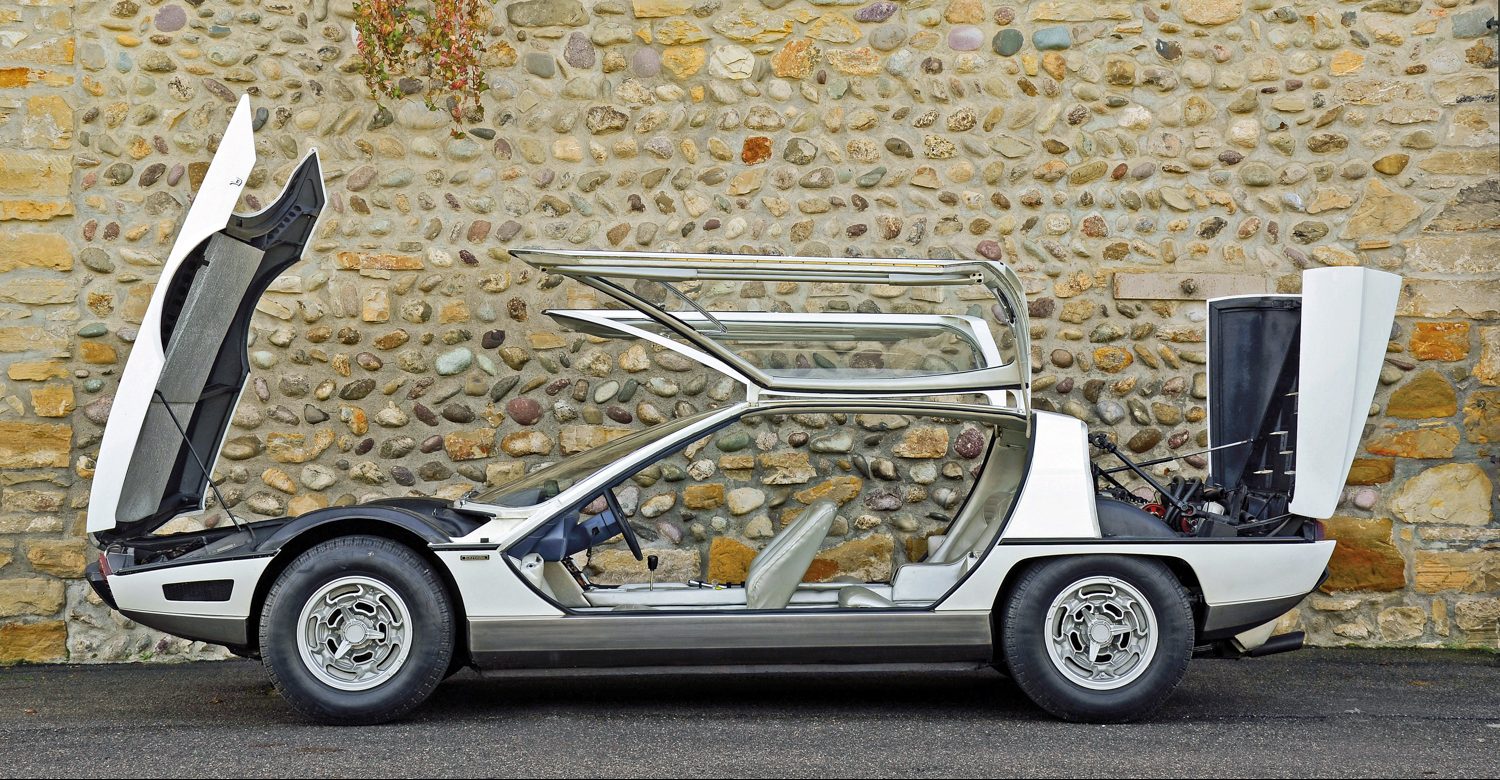
Espada—named for the matador’s sword that victoriously gores the bull—was conceived to slice into the luxury market segment that accommodated four passenger touring. Upon its debut, there was literally nothing in the market to rival this four-place supercar. Derived from two of Marcello Gandini’s earlier Bertone concept cars, the Jaguar Piranha and Lamborghini Marzal, the two cars were highly influential on the Espada design. In the case of the Marzal, Lamborghini chief engineer Giampolo Dallara, surmised that cutting the Miura V12 in half and using it in the lengthened wheelbase Marzal would suffice as a mid-engine variant for the four-passenger design. But the smaller powertrain was quickly dismissed as it was clear, a performance GT car needed to have a prestige engine.
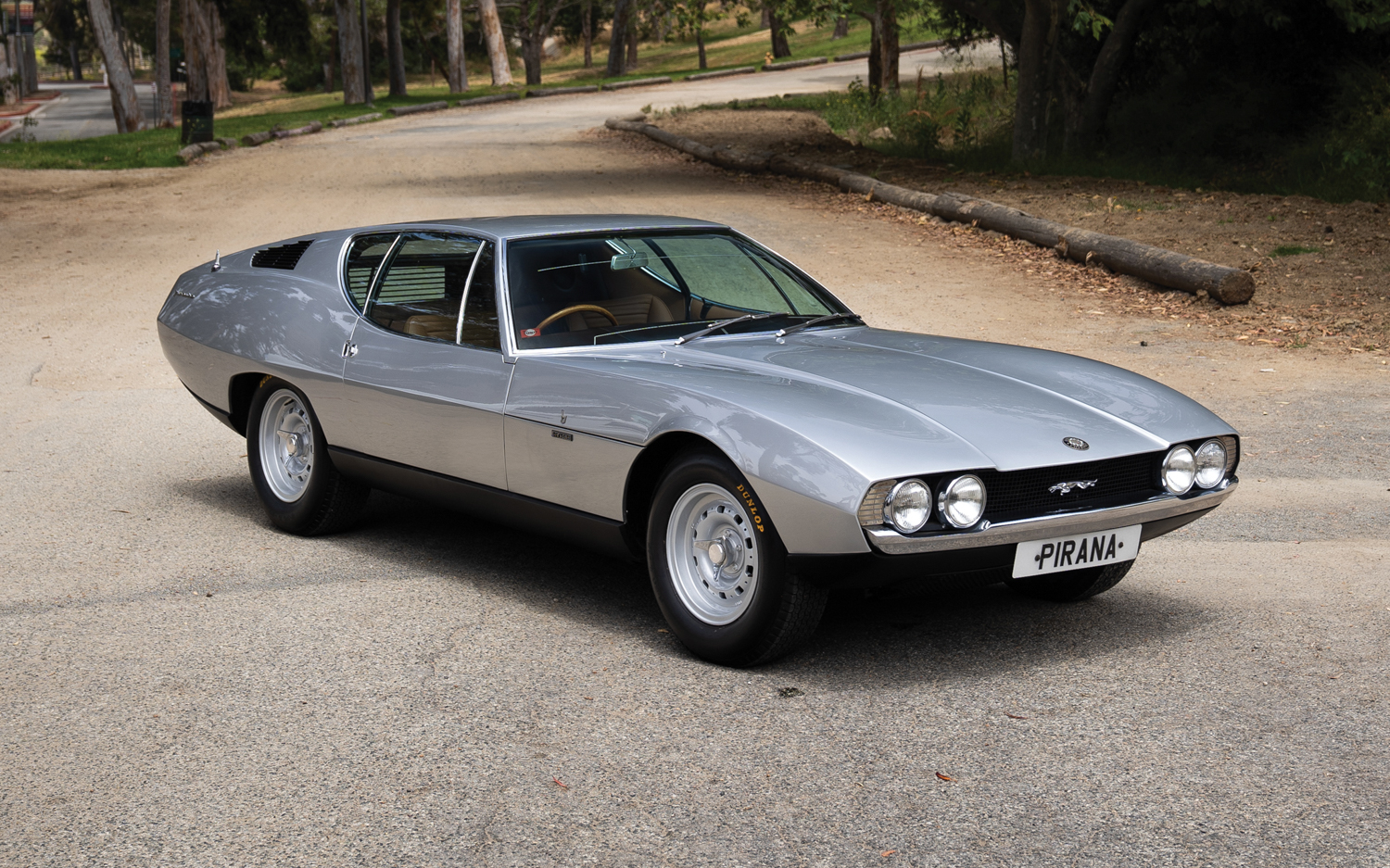
The Piranha, designed as a promotional exercise funded by The London Daily Telegraph was developed to show what a more stylish E-Type could look like in an Italian derived 2+2 configuration. Both concept cars served their unique purpose, but more importantly laid the groundwork for the front-engine V12 powered Espada. By spring of 1968, the Espada debuted in Geneva to great acclaim, ultimately becoming one of the most financially successful cars in the history of Lamborghini, selling 1,217 examples from 1968-1978, a shocking achievement especially considering the financially challenging times facing Lamborghini through the mid-’70s.
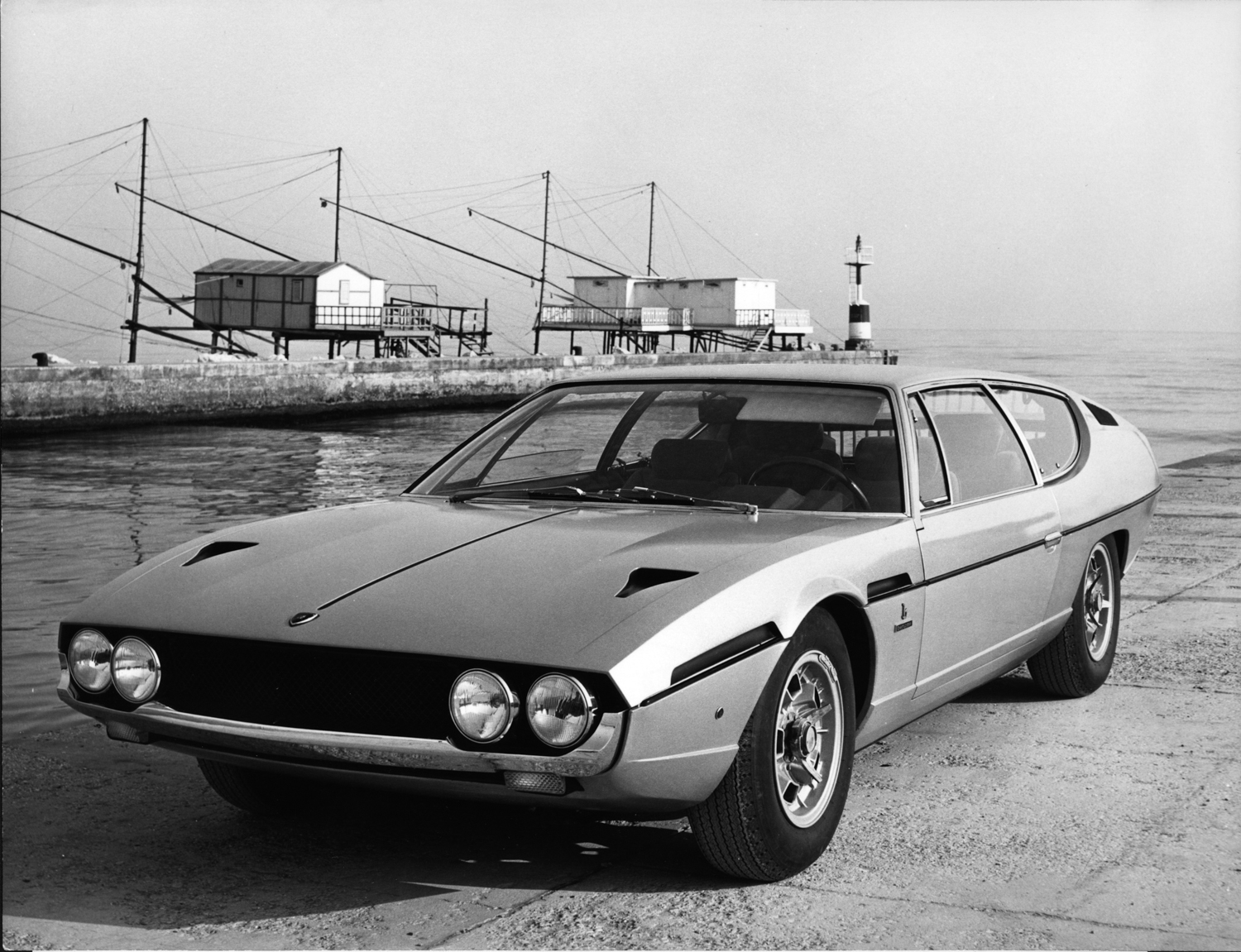
Upon first glance, the Espada immediately reveals the rich concept car heritage that contributed to the stunning bodywork. The all steel monocoque construction (new for Lamborgini) and massive lightweight clamshell alloy hood were exceptionally well-engineered for the time. Contrasted with an unfathomably low 46.5” profile, combined with the width of a full-sized American car (73.3”), the exterior design was dramatic, aggressive, and thoroughly unique. A big part of the impressive visual signature was due to the enormously sweeping glass.
With quarter glass (A) as large as the side glass (a feature hardly ever achieved in four door designs) and side glass proportions of nearly 1:1 height relationship (B) to the door panel (a design feature of impossible dimension today), the side profile is a remarkable revelation of individuality and daring. The dramatically sloped windscreen and fastback rear glass are further highlighted by the novel peek-through rear “bumper glass” which allows for greater rearward visibility especially when parking. But as dramatic and forward thinking as the Espada was from the outside, on the inside were features never heard of in a sportscar. With nearly 10 cubic feet of luggage space, a hinged rear window, and room for rear passengers, the Espada cradled driver and passenger in sumptuous comfort, nestled between the tall driveline, concealed by the central main console.
Further details throughout the exterior included NACA ducts prominently featured on each side of the lengthy hood, distinctive linear slotted hood vent treatments (allowing for warm air evacuation), flanking the curved wheel flares, all fused into a planar design that tapered to dramatically rounded rear fenders. Dominating the svelte profile, were arguably the best looking wheels in the history of sports cars, the Campagnolo Miura cast wheel, complete with triple-eared knockoffs. And while one might have expected the dramatic design to incorporate a more daring fascia to announce the presence of such a powerful and compelling vehicle, the front of the car was cleanly executed with quad headlamps at each extreme corner, supported by a chrome bumper following the lower profile. It was a brilliantly simple execution, Gandini reasoning that the majority of the visible mass was well below eyeline. Indeed, nearly all of the drama of the Espada design happens entirely above the belt line.
Lamborghini revised and improved the car over a decade long production run with three distinct series executions. Gradual improvements were both cosmetic and mechanical with enhancements made for interior comfort and improved road use. Contemporary journalists lauded the Espada, in part because such a wonderful V12 GT car with provisions for passengers and luggage simply did not exist, but also because the Espada did not compromise in either area. It was both uproariously quick and luxuriant. The uncharacteristically long ten-year production run was both planned and fortuitous, in part because while concepts were considered for a new variant of the Espada, by the early 1970s, Bertone was struggling with conceptual ideas that improved upon this very contemporary look. Thus, the decision was made to not only retain the basic design, but to also add further luxury appointments throughout the interior. Not all changes were for the better as the ungainly front and rear bumpers of later series cars will attest, along with a marginally forgivable Chrysler automatic transmission. By 1978, the last Espada rolled off the assembly line. Sales had slowed, but there was still a great deal of interest in the Espada, particularly given the dark design times of the late ’70s and early ’80s automobile industry. The end of the Espada quite simply had more to do with the unfortunate financial situation for Lamborghini, by then a ward of the Italian court system, who insisted on focusing specifically on other more profitable cars, more specifically, the Countach.
Today, the Espada remains one of the most enigmatic and still affordable sports cars of the modern era. With Miuras now fetching seven figures, a fine Espada is hardly half the car, yet at a tenth of the price. Conceived as a purely visionary dream, born of imaginative concept car intentions and fueled by a fusion of performance and luxury, the Lamborghini Espada thrived at a time in automotive history when few fresh, yet radical, concepts dared to have such staying power.


